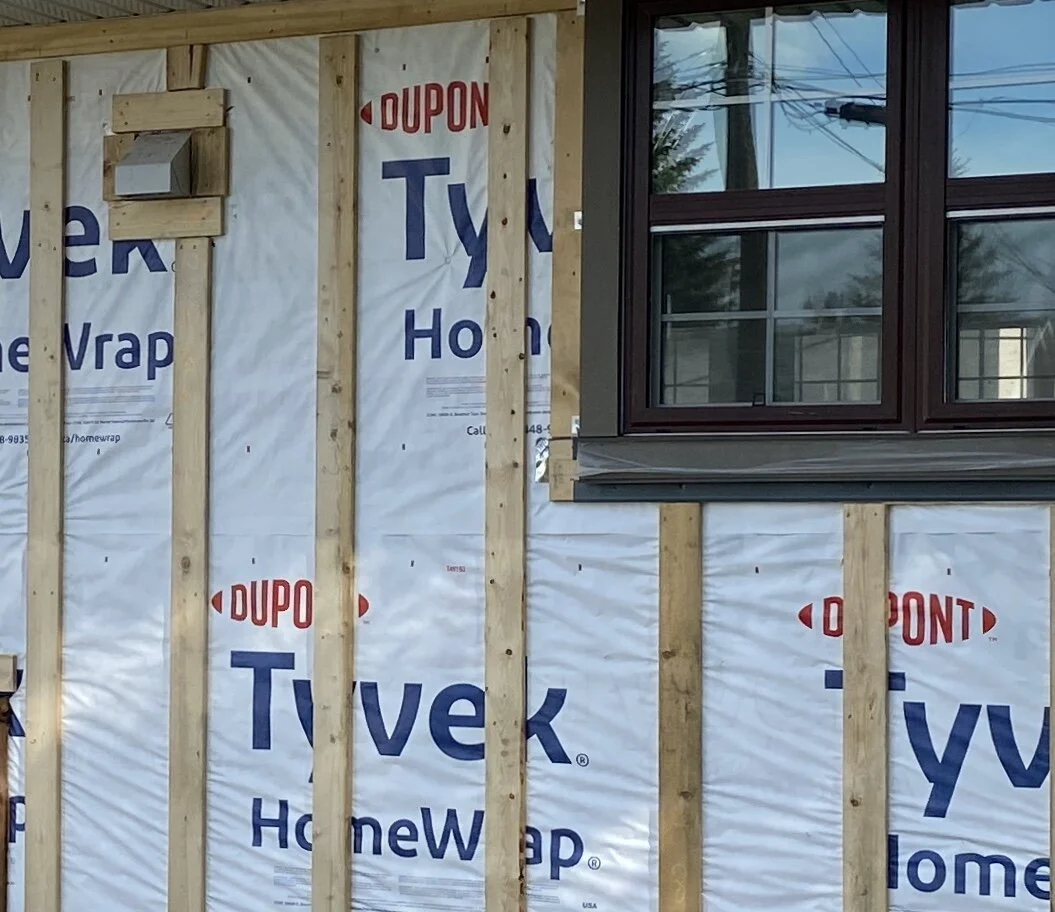If you are getting really deep into your research on the best way to design your siding installation, you may be wondering if you should include a rainscreen system into your wall assembly. In particular, the rules about using a rainscreen system with James Hardie siding products can seem especially confusing.
When I first started with James Hardie Building Products as a Technical Specialist in 2014, the company had just put out its first set of “Exterior Wall Drainage Requirements” (aka rainscreen guidelines). Believe me when I say that tons of installers, builders, and architects across Canada and the US had a tough time wrapping their heads around the new rules. To make things more confusing, James Hardie has made significant changes to their rainscreen rules twice since they first came out: once in December of 2015, and again in May of 2020.
In this article, you’ll read a basic overview of rainscreen principles, a breakdown of James Hardie’s current rainscreen requirements for their fiber cement siding and panel products, and what we believe is the best rainscreen system on the market today.
what is a rainscreen?
The basic idea behind a rainscreen system is allow for air movement and moisture drainage behind the siding/cladding layer and in front of the water resistive barrier (WRB or housewrap) of the wall. If air can move behind your cladding, any water that penetrates past the siding (or condensation that escapes from inside the structure) can drain and dry much more easily.
If moisture gets trapped between two layers of non-breathable material, the wood structure stays constantly wet; leading to decay and rot (this was one of the damaging factors in the British Columbia Leaky Condo crisis). A simple, well designed rainscreen system makes sure that even leaky walls are much less susceptible to water damage.
The simplest way to create a rainscreen is to install vertical strips of wood or metal (furring strips) at least 3/8” thick, and then install your siding on top. There are dozens of products out there that claim to provide excellent wall drainage behind the siding layer, but in this case the simpler is better. Vertical furring strips is the best rainscreen.
Does James Hardie require a rainscreen?
It all depends on the specific product line and product type. Here’s a quick reference guide:
HardiePlank lap siding and HardieShingle:
Single family detached: Not required by manufacturer
Multi-family and commercial: Not required by manufacturer
HardiePanel Vertical Siding:
Single family detached: Not required by manufacturer
Multi-family and commercial: May be required (depends on location)
Hardie Reveal Panels:
Single family detached: Rainscreen is required
Multi-family and commercial: Rainscreen is required
As you can see, most of these are pretty cut and dried: if you are using HardiePlank or HardieShingle siding, James Hardie does not require a rainscreen. If you are using HardiePanel vertical siding on a single-family detached home, James Hardie does not require a rainscreen. For HardiePanel on multi-family and commercial projects, the rules are a bit more complex.
When to Use a Rainscreen with HardiePanel Vertical Siding
For the United States: As of May 2020, James Hardie has pretty much done away with the rainscreen requirement for HardiePanel vertical siding on commercial or multifamily buildings. There are only 44 counties across the entire United States where James Hardie specifies that a 3/8” rainscreen must be used as a minimum (37 in Louisiana, 5 in Mississippi, and 2 in Alabama). Everywhere else, either a drainable housewrap (over 90% drainage efficiency per ASTM E 2273) or standard housewrap will meet James Hardie’s minimum installation requirements.
For Canada: James Hardie has no specific guidance for Canadian markets on when a rainscreen is required. Instead, Hardie has decided to defer to the local building codes in all markets. We aren’t familiar with the building codes in every province, so check with local officials before you finalize your design. In most cases though, this means that standard housewrap with HardiePanel will meet minimum manufacturer requirements.
For more information, check out James Hardie’s Exterior Wall Drainage Requirements from May 11, 2020.
Minimum Requirements vs. Best Practice
Even though James Hardie does not require a rainscreen in most cases, it can still be a relatively inexpensive way to improve the long-term health and performance of your structure. Particularly with HardiePanel, we always recommend at least a drainable housewrap as a weather barrier. We feel better knowing that the 40 square foot panel we just installed has drainage channels behind it to allow moisture to escape.
Using a rainscreen with HardiePlank lap siding is overkill in our opinion. Because individual HardiePlank pieces lap over the course below, only a very small part of the board is actually touching the wall. Plus, HardiePlank comes with built-in drip edges on the top and bottom of each board (in HZ5 markets) which helps move moisture away from the wall and on to the face of the siding. With all that said, if you want to use furring strips as an added layer of protection behind HardiePlank you certainly can!
Do I need to use a rainscreen with James Hardie’s “HardiePlank” siding in Canada?
In most jurisdictions (including Alberta) a rainscreen system is not required for James Hardie lap siding. James Hardie’s installation instructions do not specify a rainscreen for HardiePlank on any type of construction. Some local building codes (such as Lower Mainland BC) do require rainscreen behind most siding products, including Hardie siding. Always make sure to check your applicable local building code.
Thanks for reading our article! If you found it to be informative, you might also enjoy our other articles about James Hardie siding products. You can check them all out in one place here!

